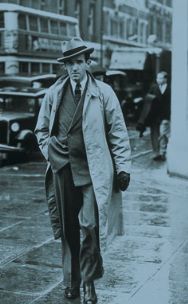Personal tools
Help
Tools
Class Notes
- Do you have news for fellow WSU alumni and other readers of Washington State Magazine? Send us your class note.
Our Story
written by alumni, faculty and friends.
NOTE: THIS IS A LEGACY SITE AND IS NOT REGULARLY MAINTAINED
Views
Difference between revisions of "Murrow Hall History"
From Our Story
| Line 1: | Line 1: | ||
| − | + | Completed in 1900, Murrow Hall was originally known as Science Hall. It was built to serve the biological sciences and geology, to house the museum and provide a temporary home for the Departments of Agriculture, Horticulture, and Veterinary Sciences. When its science functions were taken over by a new Science building in 1935, the building became Arts Hall. By the 1960s it was home of WSU’s Radio and Television Services, with transmitter and studios of KWSC-TV and antenna atop Bryan Hall tower. Collegiate training in radio broadcasting began at WSU; KWSC is one of the oldest of educational broadcasting stations. In 1973, the Fine Arts Department moved to a new facility on campus and the building was transformed into the university’s communication center. In that year the building was renamed the Edward R. Murrow Communication Center after one of WSU’s most prestigious alumni. | |
| + | |||
| + | Today, Murrow still serves as the Edward R. Murrow Communication Center as well as classrooms for other majors. | ||
| + | [[Image:Murrow1 london.jpg|thumb|right|200px|Edward R. Murrow '30 in London, 1940. Photo courtesy WSU Manuscripts, Archives, and Special Collections.]] | ||
Revision as of 19:21, September 21, 2012
Completed in 1900, Murrow Hall was originally known as Science Hall. It was built to serve the biological sciences and geology, to house the museum and provide a temporary home for the Departments of Agriculture, Horticulture, and Veterinary Sciences. When its science functions were taken over by a new Science building in 1935, the building became Arts Hall. By the 1960s it was home of WSU’s Radio and Television Services, with transmitter and studios of KWSC-TV and antenna atop Bryan Hall tower. Collegiate training in radio broadcasting began at WSU; KWSC is one of the oldest of educational broadcasting stations. In 1973, the Fine Arts Department moved to a new facility on campus and the building was transformed into the university’s communication center. In that year the building was renamed the Edward R. Murrow Communication Center after one of WSU’s most prestigious alumni.
Today, Murrow still serves as the Edward R. Murrow Communication Center as well as classrooms for other majors.
Our Story site map
Our Story main page | Our Story categories | Help Desk
Contact | Give | Advertise
Washington State Magazine | Washington State University | Class Notes
Our Story is coordinated by
In partnership with
Our Story and Washington State Magazine are publications of Washington State University. All rights reserved.
P.O. Box 641227, Washington State University, Pullman, WA 99164-1227 USA | wsm@wsu.edu, 509-335-2388
Accessibility | Copyright | Policies

